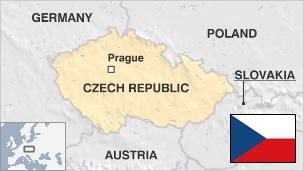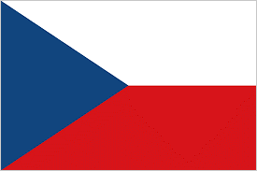Overview
Czechia is a stunning landlocked country located in Central Europe, with 4 countries bordering it; with Germany to its west, Poland to the northeast, to the south is Austria, and Slovakia to the southeast. Czechia geographically is predominantly a hilly countryside covering an area of almost 79,000 square kilometers, with a generally temperate continental climate. The population is about 10.7 million people and the official language is Czech which is part of the Slavic language group.
Part of Czechoslovakia until the ‘velvet revolution” in 1993, the Czech Republic is a democratic country, with a highly-developed economy, and a rich cultural heritage.
After the end of Communist rule in 1990, and was the first former Eastern Bloc state to acquire the status of a developed economy.
The Czech Republic joined the European Union in 2004 and is also a member of NATO.
Socio-Economic Profile
The economy of the Czech Republic is a developed export-oriented market economy based in services, manufacturing, and innovation, and boasts a well-educated, skilled workforce.

Prague at early-evening
Recently the Organization for Economic Co-operation and Development (OECD) predicted the Czech economy to grow at 2.1% this year, while in 2021 the economic growth is projected to grow at between 2% and 2 ¼ %.
However, the Czech National Bank, forecasts a GDP growth rate of 2.4% in 2020, and predicts an accelerated growth of 2.8% for 2021.
Czechia’s sovereign credit ratings are as follows: Standard & Poor’s credit rating is at AA-with stable outlook. Moody’s credit rating is at Aa3 with stable outlook, and Fitch’s credit rating is presently at AA- with stable outlook.
Industry and Manufacturing make up 32.2% of GDP and employs 37.7% of the labour force.
The main industries are: Machine-building, iron and steel production, metalworking, chemicals, electronics, transportation equipment, textiles, glass, brewing, china, ceramics, pharmaceuticals; and the automotive sector which is the largest industry, with Volkswagen (Skoda) Toyota and PSA producing quality cars in the country.
The Services sector equates to 54.2% of the GDP and employs roughly 60% of the working population.
Agriculture in 2019 accounted for 2% of the country’s GDP and employs about 2.8% of the labour force. The main agricultural products are sugar beet, potatoes, wheat, barley, hops and poultry.
Czechia has a strong hospitality and tourism sector with ever increasing numbers of tourists visiting this beautiful, safe country steeped in rich culture and heritage; becoming one of the most popular tourist destinations in Europe, receiving more than 20 million visitors annually. The capital, Prague, as the most popular destination, received over 8 million visitors annually, out of which almost 7 million are foreign tourists.
Brief Socio-Economic Profile – 2019

Morning in Prague
Population: 10.6 million
GDP (PPP): $375.7 billion
GDP Growth: 4.3%
GDP 5-yearcompound annual growth: 2.9%
GDP per capita: $35,512
Unemployment Rate: 2.9%
Inflation Rate (CPI): 2.4%
Foreign Direct Investment (FDI) Inflow: $7.4 billion
Czech Republic is ranked 13th among 44 countries in the Europe region.
Czechia / Czech Republic part of the Visegrád Group – Group of 4 Nations

The Visegrád Group of 4 countries: Poland, Hungary, Czech Republic, and Slovakia, are uniquely positioned within the EU, in terms of:
– Fundamental Christian Civilization and Principles; Safe, Secure, low crime environment; Stable Society
– Open to Socio-Economic Development Initiatives; Support and Appreciation of Education; Rich Culture & Heritage; Strong Economic Growth and Prospects; Low Inflation and Low Unemployment
– Excellent Investment climate and Incentives
– More and more people in the region who can speak English (especially the youth), etc.
Socio-Economic Significance of this Visegrád Group:
* If this region was measured as a collective single state, the V4 would be the 5th largest-economy in Europe and rank 12th in the World!
* The combined population of 64 million would place it 22nd largest in the world and the 4th in Europe.
* Poland has the largest population in the V4 Grp (38 million), followed by the Czech Republic (11 million), Hungary (10 million) and Slovakia (5.5 million).


